The central nervous system (CNS) consists of the brain and the spinal cord. It acts as the body’s control center, processing sensory information and directing responses. The CNS coordinates voluntary activities, like movement, and involuntary ones, such as breathing and heartbeat.
Our brains have two primary functions: controlling behavior and regulating the body’s physiological processes.
However, the brain cannot do this alone as it needs to receive information from the body’s sense receptors, which it achieves through communication with the spinal cord.
The CNS is named ‘central’ because aside from occupying the central position of the body, the CNS is also the most important part of the nervous system for maintaining and producing behavior.
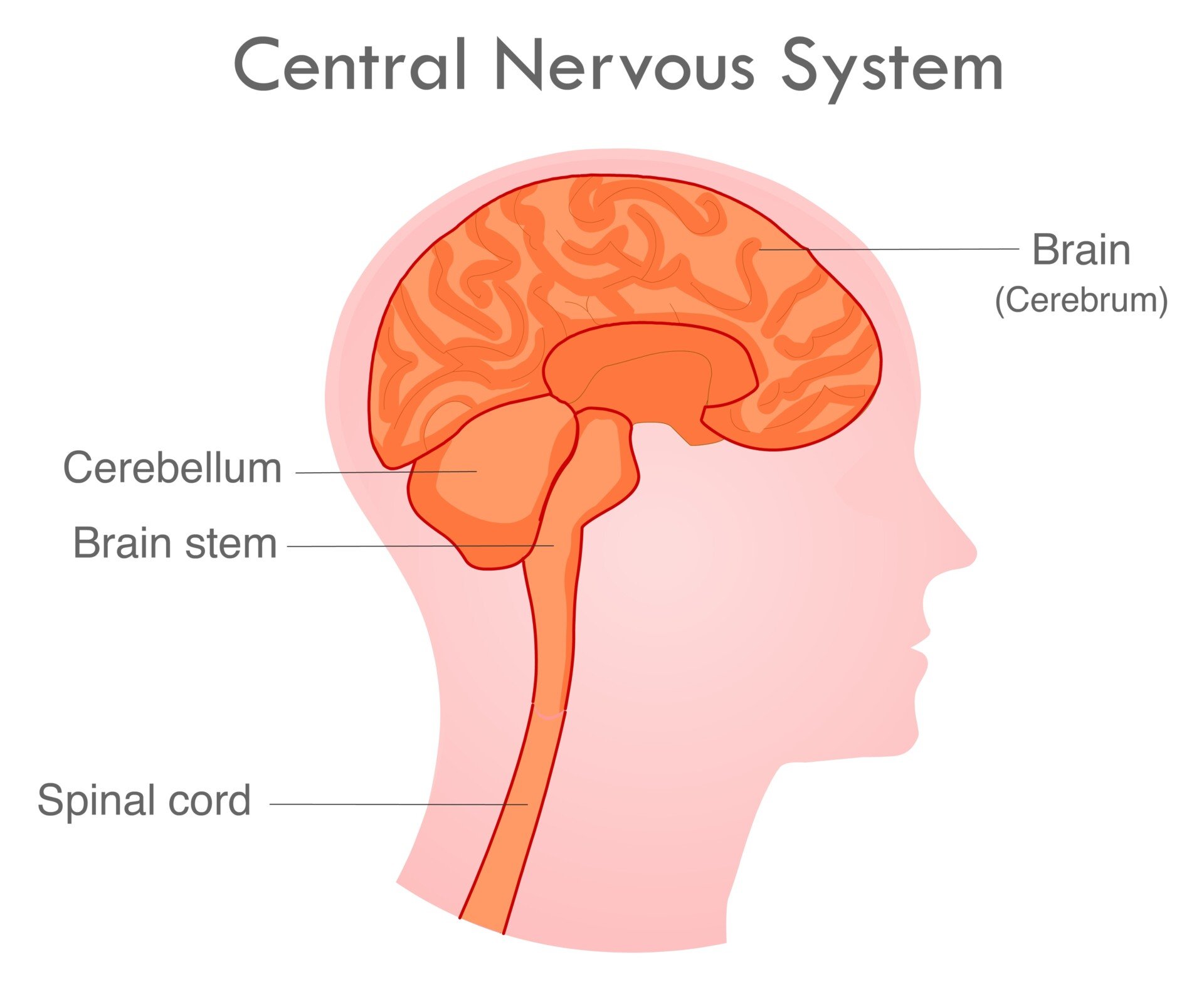
The central nervous system has three main components which are the brain, spinal cord, and nerve cells:
The Brain
The brain is responsible for functions such as thought, forming memories, movement, and awareness. The human brain has three major parts: the cerebrum, cerebellum, and brain stem.
The Brain Stem
The brain stem is located at the base of the brain and is one of the most primitive regions of the brain; and is made up of the midbrain, pons, and medulla oblongata.
The brain stem functions are correspondingly basic and physiological, including automatic behaviors such as breathing and swallowing.
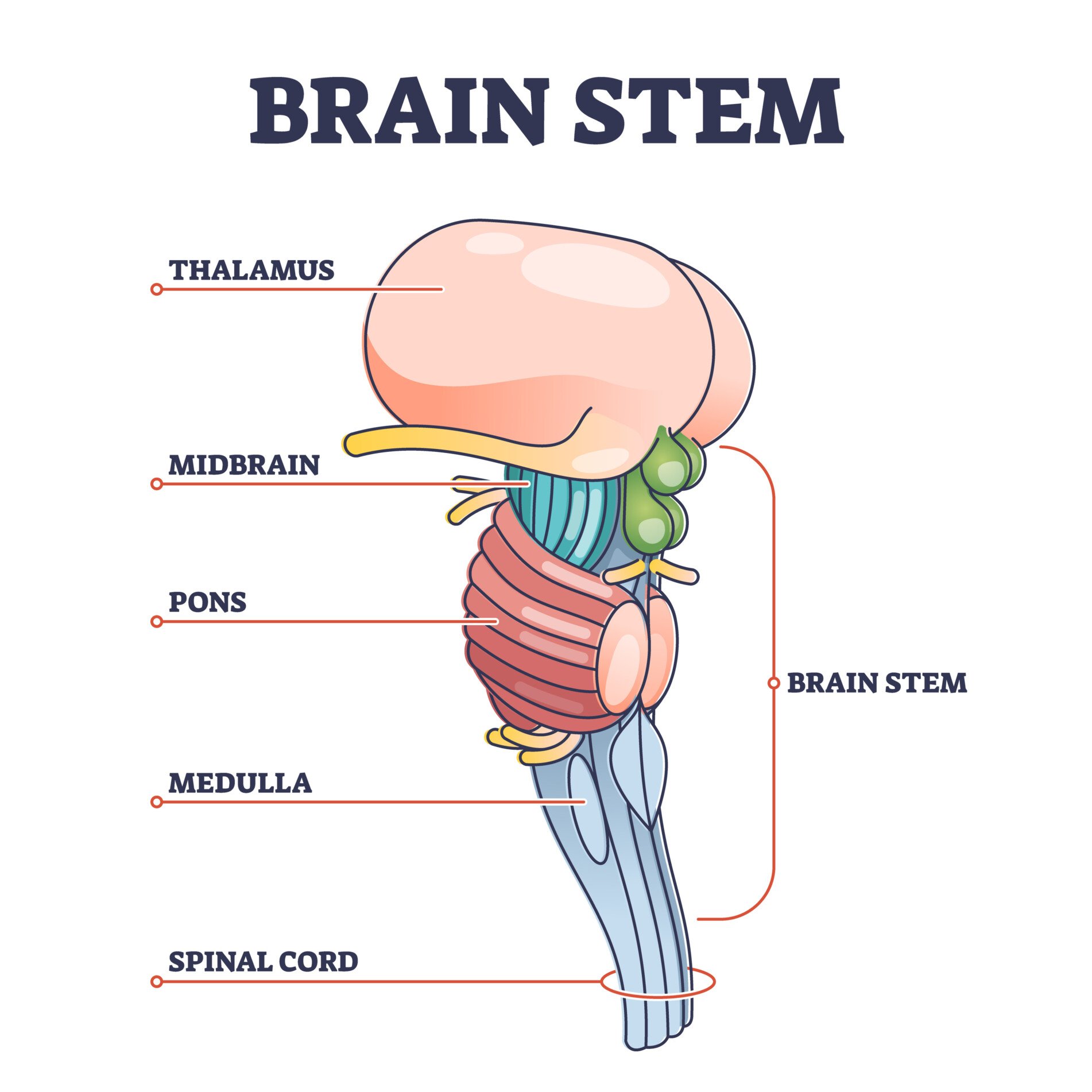
The Cerebellum
The cerebellum is situated just above the brain stem, which monitors and regulates motor behavior, particularly automatic movements and balance.
The brains of some animals, such as amphibians, consist primarily of a brain stem and a cerebellum.
The Cerebrum
The cerebrum is the most recently developed in the human brain and is the largest part of the brain (which makes up about 85% of the total mass). The cerebrum is split into two cerebral hemispheres that work together to produce various functions such as voluntary behaviors, speech, cognitive thinking, and awareness.
The left hemisphere is responsible for controlling the movements on the right side of the body, whereas the right hemisphere is responsible for controlling the movements on the left side of the body.
Within the cerebral hemispheres, there are four areas, or lobes, that each serve different functions:
- Frontal lobes – these are positioned at the forefront of the brain and are responsible for higher cognitive functioning, language development, attention, decision-making, and problem-solving.
- Occipital lobes – positioned at the back of the brain, these lobes are responsible for processing and encoding different visual information such as color, orientation, and motion.
- Parietal lobes – situated at the top of the brain, are responsible for processing sensory information, attentional awareness, visuospatial processing, and integrating somatosensory information (e.g., touch, temperature, and pain).
- Temporal lobes – located just behind the ears, the temporal lobes are responsible for the recognition, perception (hearing, vision, smell), understanding of language, and forming memories.
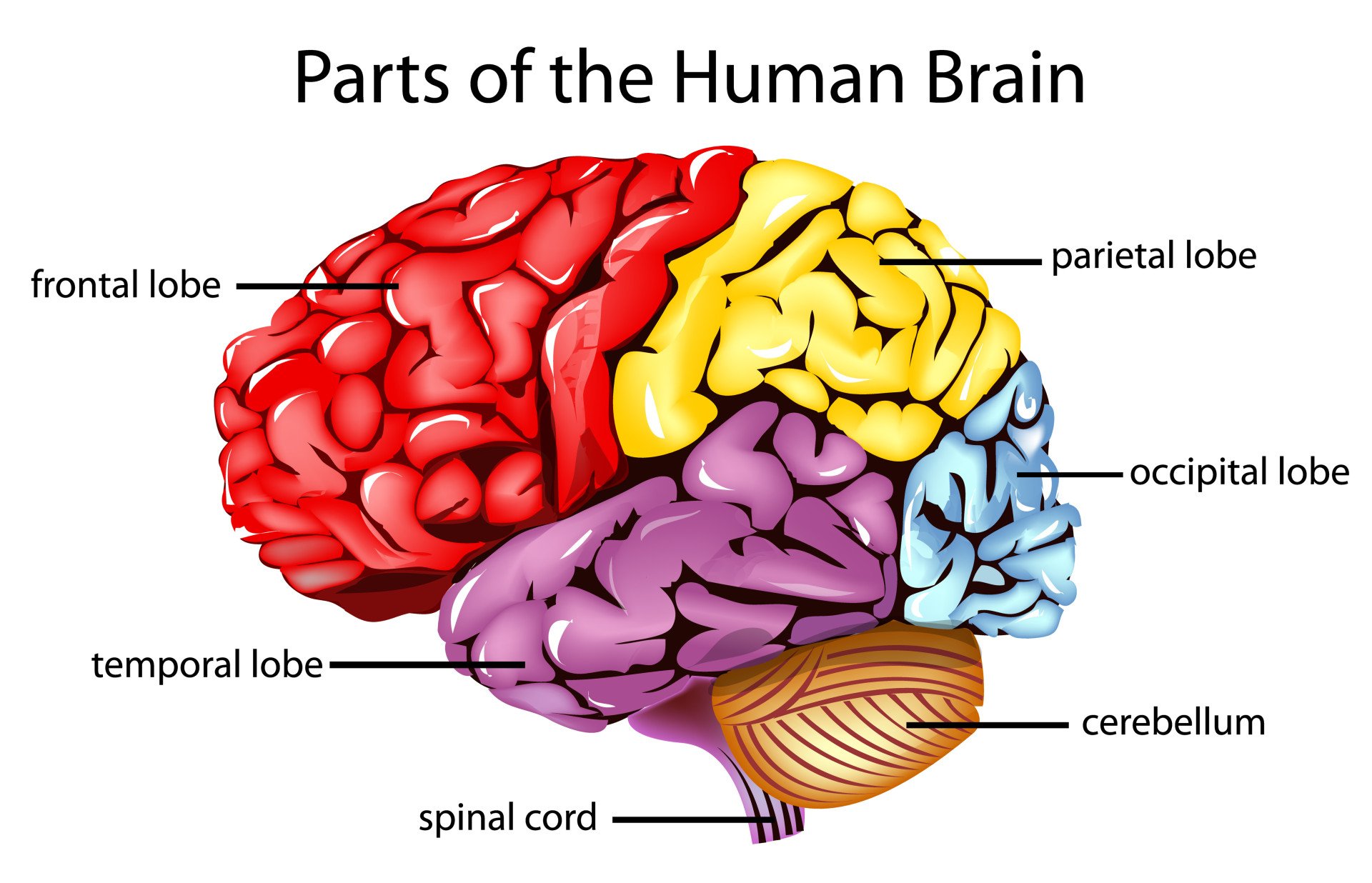
The surface of the cerebrum is covered by the cerebral cortex, often referred to as grey matter. Grey matter consists of a thin layer of tissue, approximately 3mm thick, containing billions of neurons. The grey matter is the structure whereby memories are stored, perceptions take place, and information is processed.
The neurons in the grey matter are connected to other parts of the brain by a layer of nerve fibers called white matter, named so because of the shiny white appearance of the substance that insulates it.
Grey matter is distinctively wrinkled in appearance – it is full of bulges separated by grooves. A bulge in the brain is called a gyrus, or gyri, when plural. The grooves in the brain are called fissures. The fissures and gyri expand the surface area in the cerebral cortex, ultimately increasing the number of neurons it can contain.
Animals with the largest and higher functioning brains, such as humans and some primates, have the most wrinkled brains and, thus, the largest cerebral cortices.
Spinal Cord
The spinal cord is a long, thin collection of neurons attached to the base of the brain (brain stem), running the length of the spinal column.
The spinal cord contains circuits of neurons that can control some of our simple reflexes, such as moving a hand away from a hot surface without participation from the brain.
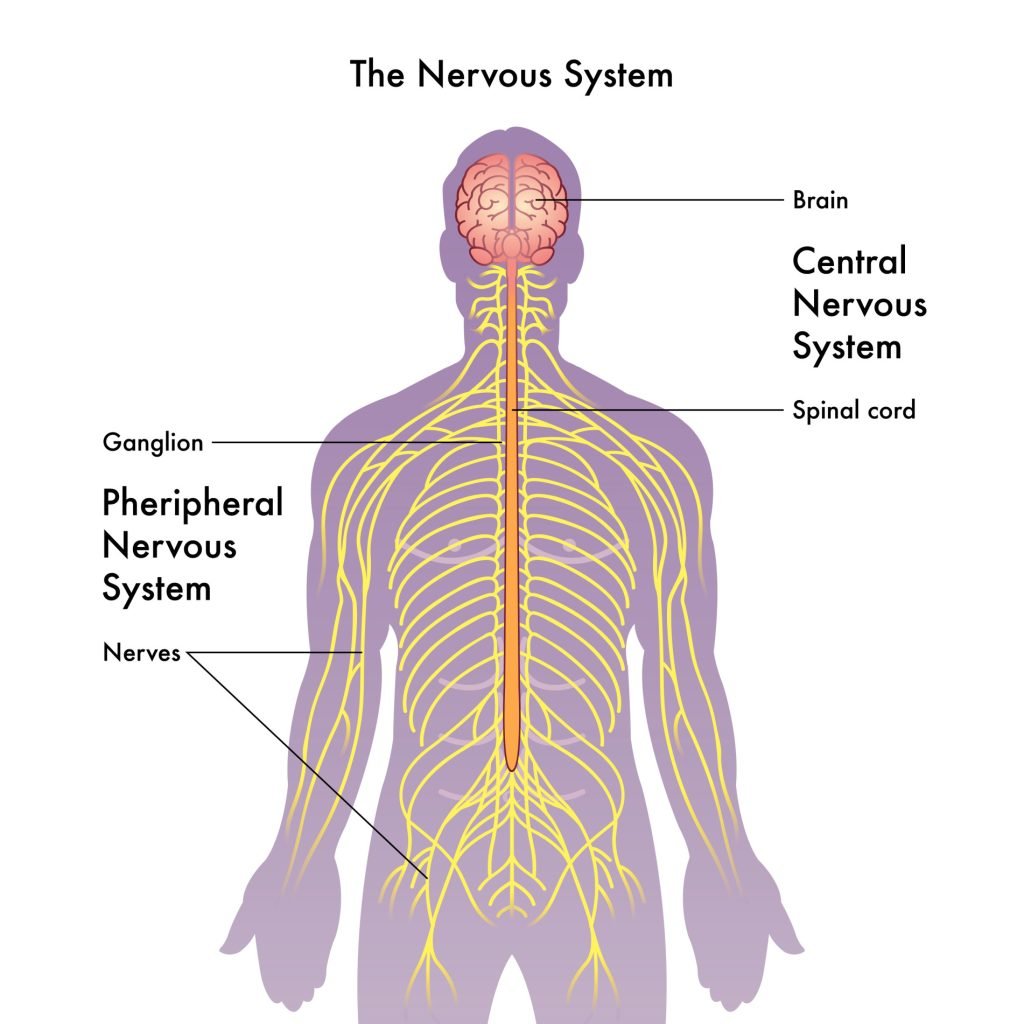
The CNS communicates with the rest of the body through the nerves, which are bundles of fibers that transmit signals to and from the CNS. The nerves which are attached to the spinal cord make up the peripheral nervous system (PNS).
The nerve roots exit the spinal cord and travel to both sides of the body, carrying messages back and forth between the brain and the peripheral nerves.
The middle structure of the spinal cord is made up of grey matter, and the external tissues are made of white matter. Within the spinal cord, there are 30 segments, each belonging to one of four sections:
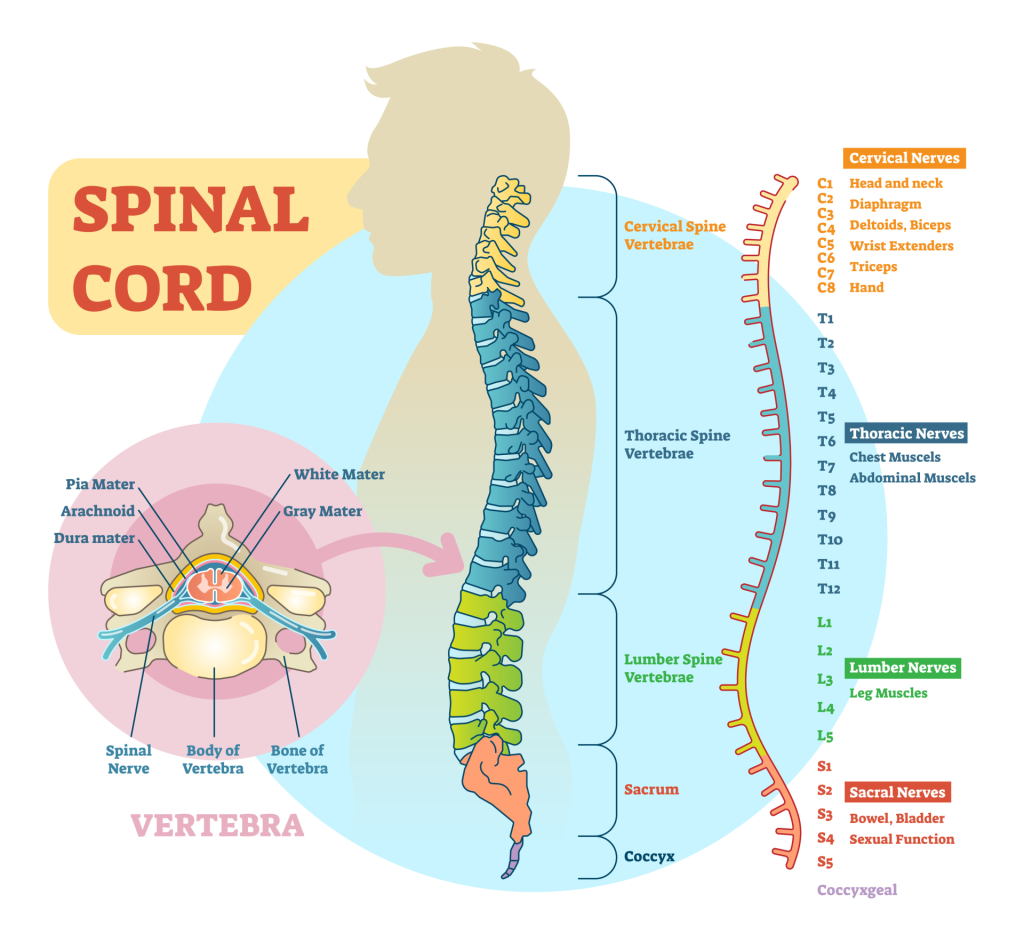
- Cervical – These are 8 segments that transmit signals from or to areas of the head, neck, shoulders, arms, and hands.
- Thoracic – These are 12 segments that transmit signals from or to areas of the arms, chest, and abdominal areas.
- Lumbar – These are 5 segments that transmit signals from or to areas of the legs, feet, and some pelvic organs.
- Sacral – These are 5 segments that transmit signals from or to areas of the lower back, pelvic organs, genital areas, and some areas of the legs and feet.
- Coccyx – which is the base of the spinal cord.
Nerve Cells
For messages to be transmitted throughout the CNS and the body, there are billions of cells that help in the functioning of the brain and spinal cord.
Neurons, or nerve cells, connect with each other in order to send and receive messages in the brain and spinal cord. Neurons work together to transmit sensory information to the brain and are responsible for making decisions, emotions, and muscle activity.
There are approximately 86 billion neurons in the CNS, with thousands of different subtypes identified which serve different functions. Each neuron is made up of a cell body (soma), axons, and dendrites.
Glial cells are non-neuronal cells in the CNS that do not themselves transmit messages but protect and support the neurons. Glia cells account for around 90% of the overall cells in the CNS. There are three types of glial cells in the CNS: astrocytes, microglial, and oligodendrocytes.
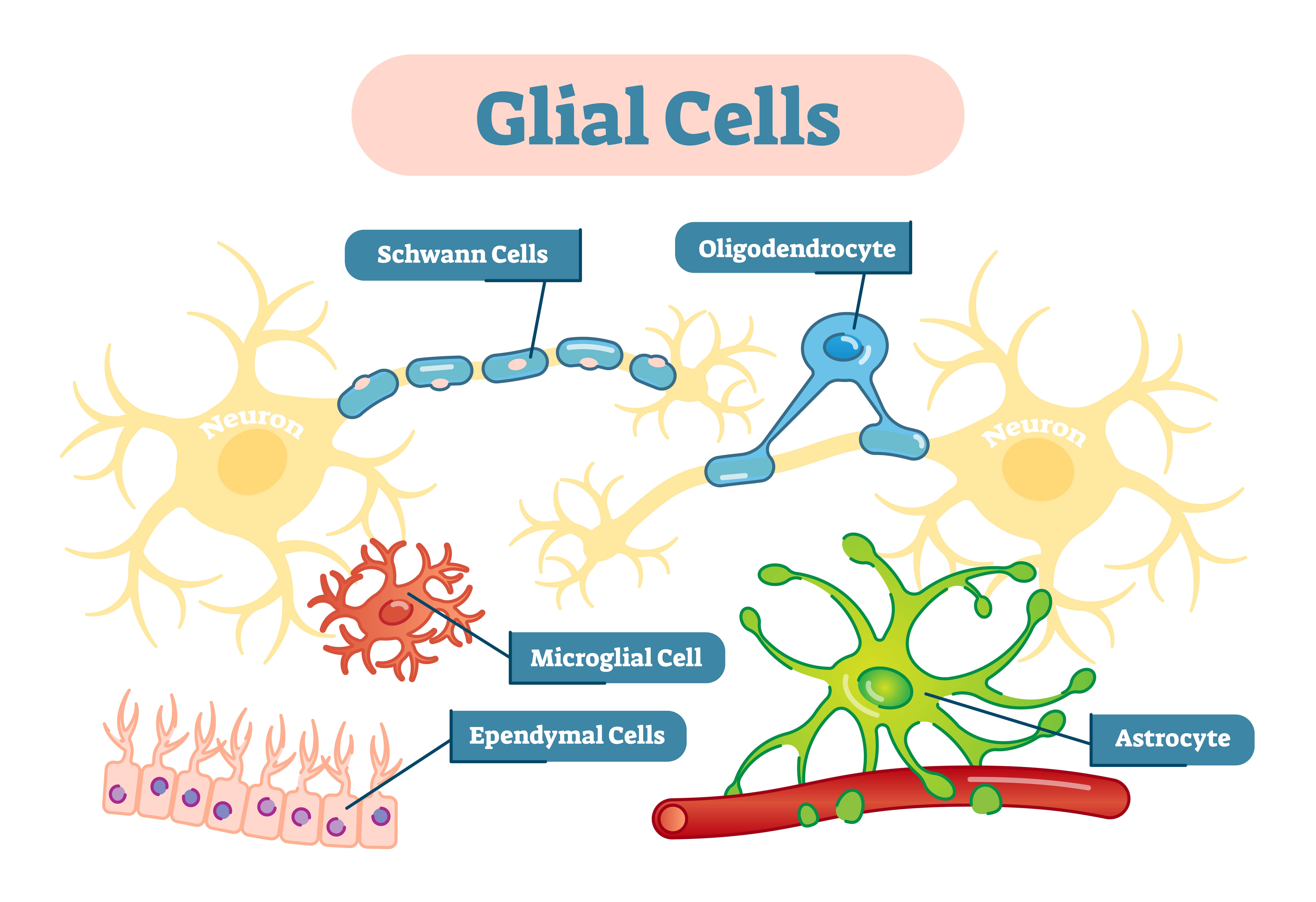
Astrocytes are the main support cells of the CNS, which make and secrete proteins called neurotrophic factors (which support the growth and survival of neurons). These types of cells also help in removing harmful proteins and chemicals that may damage neurons.
Microglia cells are responsible for removing damaged neurons and infections and are important for maintaining the health of the CNS. They also produce molecules called cytokines which regulate the cell’s immunity in response to injury.
Oligodendrocytes are responsible for producing a fatty substance called myelin, which is used as insulation that wraps around the axons of neurons. Myelin is essential for neurons to carry electrical messages at a much faster speed than neurons that are not insulated by myelin.
Protective Structures
As the central nervous system is vital for a variety of functions as well as surviving, it is exceptionally well protected. A skull encases the brain, and the spinal cord runs through the middle of a column of hollow bones known as vertebrae.
As well as this, the brain and the spinal cord are also protected by a three-layered set of membranes called the meninges (the layers specifically called pia mater, arachnoid, and dura mater).
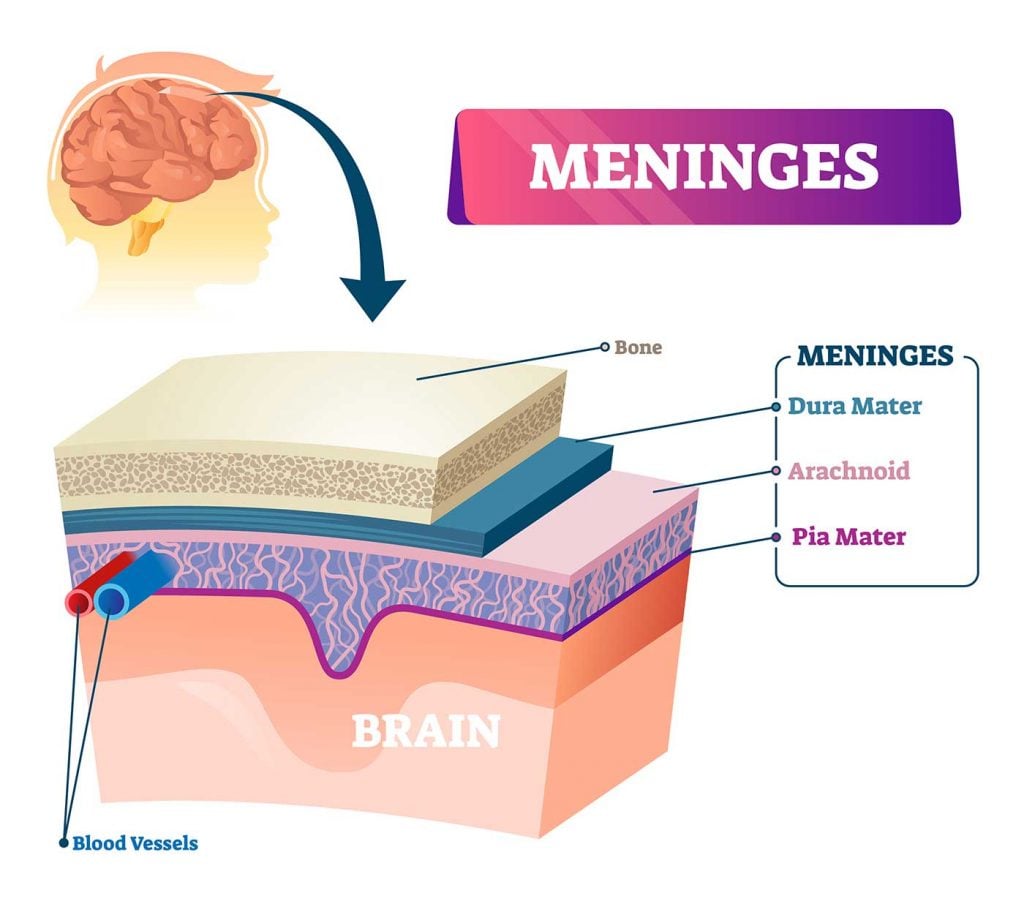
To ensure the brain and the spinal cord do not come into direct contact with any bones of the skull or vertebrae, they float in a clear liquid called cerebrospinal fluid.
The cerebrospinal fluid fills the space between two of the meninges, as well as circulates within the ventricles of the CNS, providing a surrounding cushion to the brain and spinal cord, protecting them from damage.
Sources:
Brodal, P. (2004). The central nervous system: structure and function. oxford university Press.
Noback, C. R., Ruggiero, D. A., Strominger, N. L., & Demarest, R. J. (Eds.). (2005). The human nervous system: structure and function (No. 744). Springer Science & Business Media.
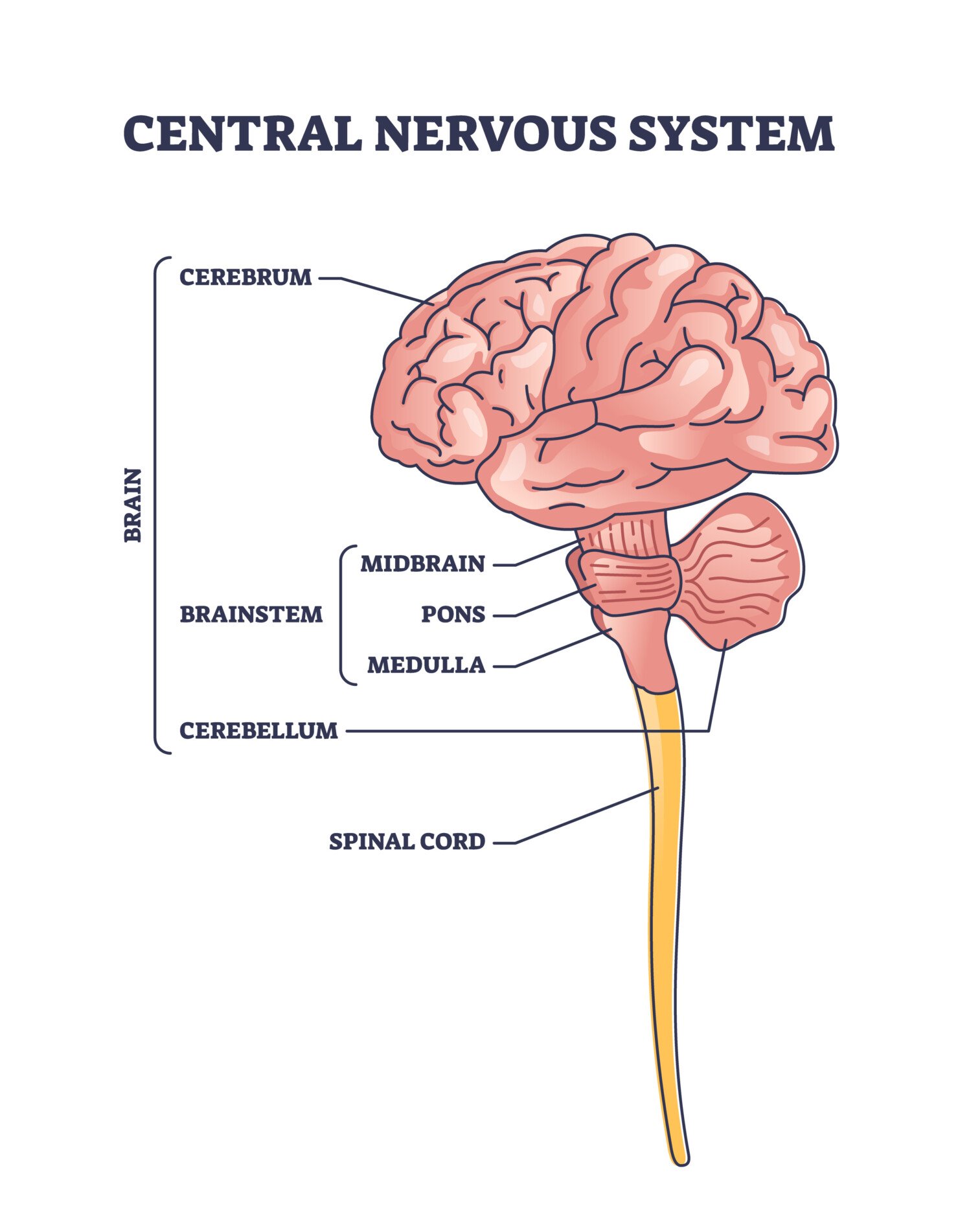

Saul Mcleod, Ph.D., is a qualified psychology teacher with over 18 years experience of working in further and higher education. He has been published in peer-reviewed journals, including the Journal of Clinical Psychology.

Associate Editor for Simply Psychology
BSc (Hons) Psychology, MSc Psychology of Education
Olivia Guy-Evans is a writer and associate editor for Simply Psychology. She has previously worked in healthcare and educational sectors.